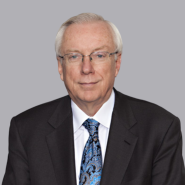Federal Circuit Reverses Novartis Gilyena Negative Limitation Decision
- June 22, 2022
- Article
Associated People
Associated Technologies
On June 21, 2022, the Federal Circuit acting on a request for panel rehearing in the decision by the Federal Circuit in Novartis v. Accord Health Care, Inc., 21 F.4th 1362 (Fed. Cir. 2022), affirming the district court’s decision of infringement and validity of the Novartis patent on Gilenya, U.S.P. 9,187,405, granted the request and proceeded to reverse the original decision and hold the asserted claim invalid for failing to comply with the written description of 35 U.S.C. § 112(a).
The difference between the original decision and the rehearing was a change in the panel. Judge O’Malley, who wrote the original opinion in which Judge Linn joined, left the Federal Circuit. Judge O’Malley was replaced by Judge Hughes who joined with Chief Judge Moore, who had dissented in the original opinion, in reversing the decision. The abrupt reversal of the Federal Circuit was not the result of a change in law but rather a change in the composition of the panel. This is yet another demonstration of the Federal Circuit’s failure to be consistent from panel to panel on a legal/factual question. It was just such flip-flops that Judge Albright called out in his Memorandum Opinion in Health Discovery Corp. v. Intel Corp. case 6:20-cv-0666-ADA, December 27, 2021, on a motion to dismiss under 35 U.S.C. § 101. Judge Albright examined four Federal Circuit opinions on patent eligibility, two finding eligibility and two not and could not discern the factual differences resulting the contrary conclusions. The Federal Circuit’s inconsistent decisions cause uncertainty in the prosecution and enforcement of patents to the detriment of the progress of the useful arts.
In Novartis, five judges considered the written description question with 3, two Federal Circuit judges and Third Circuit Judge Kent Jordan, sitting in the district court, finding written description for the negative claim limitation of administering fingolimod “at a daily dosage of 0.5 mg, absent an immediately preceding loading dose regimen.” The USPTO had allowed Novartis to amend the claims to add the limitation. Only Judges Moore and Hughes found no written description. They found “clear error” in Circuit Judge Kent’s opinion where Judges O’Malley and Linn found none and where the USPTO had considered the limitation supported. Thus, three Judges and USPTO had found written support, but Judges Moore and Hughes found none and reversed the decision. If there was such clear error why such a split?
The facts are simple, the ‘405 patent did not describe not using a loading a dose. Neither did it describe using a loading dose. There was evidence, found persuasive by Judges Jordan, O’Malley and Linn and the USPTO that the specification would lead to not to use a loading dose (an initial dose larger than normal). Judges Moore and Hughes disagreed pointing to other evidence that would suggest that a loading dose might be used which precluded, in their opinion, finding written description of the “absent an immediately preceding loading dose regimen.” When you have such a split how can one say there is clear error?
A difference of opinion is not clear error.
This decision is a poster child of what is wrong with the Federal Circuit – the inability to be consistent in its decision making and failing to give proper deference to the opinions of others.
Recent Publications
5 IP Rules to Know to Protect Your Business in the United States (article in French)
Coaching INPI Newsletter










 Counseling & Strategic Advice
Counseling & Strategic Advice IP Transactions
IP Transactions Litigation
Litigation PTAB Proceedings
PTAB Proceedings Start-Up
Start-Up Technology Transfer
Technology Transfer Trademark & Designs
Trademark & Designs U.S. Patent Procurement (Application Drafting & Prosecution)
U.S. Patent Procurement (Application Drafting & Prosecution)








